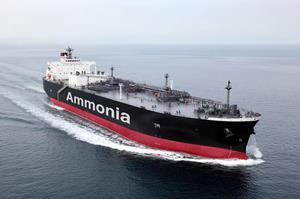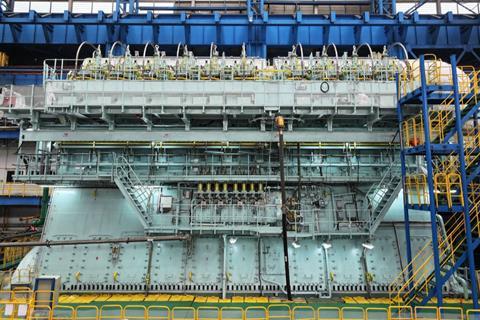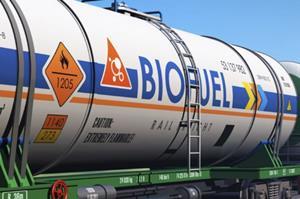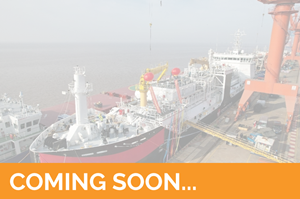Ahead of the IMO’s Marine Environment Protection Committee (MEPC) meeting in July, bulk carrier association Intercargo has outlined some of the difficulties facing the segment as it looks to implement the requirements of the Ballast Water Management (BWM) Convention.

Intercargo welcomes and supports international initiatives and legislation on ballast water management. However, it should be recognised that the implementation needs to be made in the most effective and practical manner possible. A newbuilding vessel case is totally different to retrofitting an existing vessel. And the introduction of type-approved treatment equipment to bulk carriers, particularly the existing fleet, brings considerations and challenges that remain unrecognised by the regulators.
Currently there are 69 BWM systems that have received type-approval certification from their respective administrations. But this does not mean that a ship owner or shipyard has a choice of 69 different systems. Several approved systems are not able to treat the water at the rate required to enable normal ballasting operations. Compared to most other vessel types, bulk carriers together with tankers and gas carriers tend to have a larger ballast capacity with pumps of higher capacity.
The existing fleet is confronted with even greater challenges than those faced by newbuilds. In addition to the lack of suitable systems, bulk carriers have less choice due to the size limitations imposed by available space and by electrical powering requirements compared to the available power onboard.
Gravity discharge
The bulk carrier fleet is the largest global sector by deadweight tonnage and a significant portion of the fleet utilises the highly energy efficient gravity discharge system for the topside ballast water tanks unique to bulk carriers. On these vessels, the top side tanks are typically filled from the fire main, not from the ballast line and are discharged directly overboard. This is incompatible with requirements for obligatory discharge monitoring and secondary discharge treatment required to reach the performance standard, or for neutralisation of any chemicals used in the treatment process.
UV systems generally require a secondary treatment phase at discharge to achieve the required D-2 standard. Fitting this type of system on bulk carriers with gravity discharged top side tanks is therefore extremely challenging. It is not possible to simply connect the top side tanks to the double bottom tanks as the structure of the lower tanks, particularly the hopper tanks, cannot support the rise of pressure (due to the additional head of water) without additional strengthening. It has been estimated that the additional weight, in the form of stiffeners, collar plates and brackets, would amount to between 50 and 200 tonnes depending on the vessel size. The considerable modifications, as well as damage to and repair of ballast tank coatings, increase the scope of work needed.
Connecting the top side tanks to each other and then piping back to the engine room brings its own problems, such as penetrating the engine room forward bulkhead and running ballast piping through fuel tanks. There will also be problems with effective emptying of tanks due to trim, which may lead to operational difficulties during loading and unloading.
A third possibility is to connect each top side tank to the ballast main in the double bottom/duct keel. In addition to modifications to existing pipework, fitting of pipe supports, new penetrations through watertight boundaries and repairs to the existing ballast tank coating system, isolating valves would need to be fitted to each new branch of the ballast line.
Fitting a common ballast discharge line through the top side tanks with cross valves to each tank is an option. However, this would also lead to major modifications including penetrations through the engine room bulkhead and other tight bulkheads, fitting of pipe supports and damage to ballast tank coatings.
On top of the difficulties associated with the discharge, gravity discharged top side tanks are not filled by the ballast line serviced by the ballast pump but are filled using the fire main and general service pump. A second treatment system would be required to treat the uptake of the general service pump, or a major modification to the fire main would be needed so that ballast water entering the fire main is passed through the ballast water treatment system.
Most chemical treatment systems require monitoring of the discharge and then a chemical neutralisation phase. The same challenges faced with fitting a UV system would also apply. There are, however a limited number of chemical treatment systems which treat on uptake only, but modifications described above would need to be carried out.
In addition to the major modifications that would be required, the advantages of gravity discharged tanks - including faster ballasting and de-ballasting, lower power consumption, less wear and tear on pumps and effective tank stripping - would be lost.
Powering requirements
A significant portion of the existing fleet are geared bulk carriers. For these vessels, BWTS retrofits will create additional problems that will need to be overcome.
The powering for newbuilding vessels is calculated at the design/construction on the basis of the intended vessel operation and equipment and machinery fitted onboard. For the existing fleet there is little or no spare available power to run a BWMS. Geared bulk carriers typically have four cranes and four grabs which are used simultaneously during cargo operations. For these vessels, cargo operations will need to cease during ballasting or de-ballasting, or a major upgrade of the onboard power generation would be required. Cargo discharging capacity is often governed by the charter party and thus any reduction of the speed of cargo discharge could lead to failure to meet contractual requirements.
Electro-chlorination and UV systems have significant power requirements which would compound these issues. It would be necessary to upgrade the onboard power generation and electrical systems. The increased power requirements of BWTS will lead to more fuel being consumed in the auxiliary engines, resulting in an increase in air emissions.
Not all the available BWMS have treatment capacity equal to the capacity of the ballast pumps. This means that the owners must either choose a system from the limited options available or fit additional treatment systems in order to operate under the vessel’s design conditions. Additional systems would mean further modifications to the ballast and power supply systems, increasing the financial burden. This issue is even more complex when large bulk carriers are considered.
Fitting BWMS will most likely incur significant ballast pump pressure drops, as filters will cause a reduction in ballast pump capacity that may even require the replacement of pumps with those of a greater capacity. The filters will also affect ballasting operations in sediment rich water, such as rivers, as additional time will be required to backflush the filters.
The effects of chemically treated water on ballast tank and floodable hold coatings is not known and may have a detrimental effect. The coating system plays a fundamental role in maintaining the structural integrity of the vessel which is recognised by class and by the IMO Marine Safety Committee (which has adopted the Performance Standard for Protective Coatings for Dedicated Seawater Ballast Tanks in all Types of Ships and Double-side Skin Spaces of Bulk Carriers).
The available space for fitting a BWMS also provides challenges for the ship owner. This is especially true for smaller bulk carriers where there is insufficient room to fit all the BWMS components in the engine room. This entails the BWMS being ‘broken up’ and the components installed in different locations in the machinery and deck areas, adding to the installation and maintenance complexity. This is also detrimental to operation of the system, potentially affecting monitoring and safety.
Any modifications to the tanks and piping associated with retrofitting a BWMS will require class and flag appraisal. New connections between tanks may have significant impacts on intact and damaged stability requirements and would need to be re-assessed. Documents such as the loading manual, stability booklet and damage control plan would need to re-appraised and possibly amended.
Not so long ago, a big problem at terminals was ballast discharging speed and a bulk carrier’s capacity to load cargo at the rate the terminal wanted, to save loading time. Terminals black listed ships that delayed loading operations. It is entirely probable that such ‘swift’ loading times will no longer be possible if ballast discharge has to pass through the BWMS, and therefore it is likely that we will once again have the same or similar problems at load ports.
Regulatory issues
The latter part of 2016 brought unprecedented development to the regulatory world of ships ballast water requirements, including the agreed entry into force of the IMO’s BWM Convention, the much needed revised treatment equipment type approval G8 guidelines with the additional agreement to give these a mandatory application, and the granting of US type approval to three ballast water treatment systems. The interaction and conflict in the differing timelines has increased confusion and provided ship owners with an additional dilemma for the most appropriate way forward.
The BWM Convention – in full the International Convention for the Control and Management of Ships’ Ballast Water and Sediments - has turned into what many consider a convention that is currently not yet ready for implementation, as evidenced by the continuous ongoing need for the development of further guidelines. Strict performance requirements are coupled with a lack of confidence in the ability of the type approved treatment equipment to meet the demanding standards set. The costs, coupled with the technical and operational challenges associated with the installation and operation of unproven equipment, only add to concerns.
Revised G8 type approval guidelines were adopted during MEPC 70 in October 2016. It was also agreed to make the new type approval requirements mandatory basis; and the IMO secretariat has been instructed to rewrite the guidance agreed in a mandatory form for consideration during MEPC 71. Changing the current recommendatory text drafted into an acceptable mandatory text without the committee’s input will be demanding.
To avoid future problems, it will be desirable for ship owners to purchase and install treatment systems approved under the revised procedures, as it can be foreseen that several existing type-approved systems will either not meet the revised requirements or will have stringent operational limitations imposed. But such approved systems will not be available for some time.
It has been agreed that ‘early movers’ who have installed older type-approved systems on their ships will not be penalised. However if the experience-building phase (which commences upon entry into force and is scheduled to last three years) identifies certain treatment systems as unreliable, it may be anticipated that many ports will not allow discharge of ballast water treated by such systems without further measures being applied, if at all.
The need for fitting a treatment system with additional US type approval also needs to be carefully considered. Not all systems have the intention of pursuing US type approval and those systems currently with US ‘Alternative Management System’ (AMS) status have only a limited period of acceptability.
Installation timeframe
It has already been agreed that the date of renewal of ships’ International Oil Pollution Prevention (IOPP) Certificate following entry into force (on 8 September) for existing ships, including those contracted and under construction, is the deadline for complying with D-2 discharge standard by the installation and use of type-approved ballast water treatment systems. MEPC 70 discussed the possibility of providing an additional allowance for ships with IOPPC Certificate renewals falling within the first two years following entry into force, requiring them to fit treatment systems only by the second IOPP renewal – thus providing a D-2 compliance span of 2019 to 2024. However this is not to be finalised until MEPC 71 on 3-7 July.
The possibility of MEPC accepting this additional allowance is uncertain, although there remains a reasonable chance for adoption. But this gives very little time for ships that could benefit from this consideration to pursue the alternative of arranging for IOPP Certification renewal prior to entry into force in September, should the proposal be rejected.
The possibility of MEPC 71 agreeing to delay D-2 implementation for ships with a scheduled survey renewal falling in the first two years would certainly be welcomed by some older tonnage. This would also allow time for suitable BWMS approved under the revised G8 requirements to become available, and may provide time for the bulk carrier market to strengthen to justify such expenditure and verify the ship’s financial sustainability
However, is the chance of rejection of the proposal worth taking? One two-way possibility could be to arrange IOPP renewal to follow MEPC 71 and then decide whether or not to take up the arrangements depending on the decision. Opportunities for alternative scheduling of a de-harmonised IOPP survey renewal may be limited, especially when the potential demand is considered. Owners would be well advised to make firm arrangements early to ensure completion in the requisite timing.
The proposal provides further unwelcome uncertainty for the demanded implementation dates immediately prior to entry into force. Any amendments agreed to the BWM Convention, including the implementation schedule, can only be circulated on or after entry into force, and require six months in circulation prior to consideration for adoption, followed by another 12 months before the amended legislation can be made official.
The US situation
The US Coast Guard (USCG) type approval of three systems in December has resulted in a ‘game changer’ in the USCG’s extension process. Ship owners will now have to document and justify how they cannot fit an approved system on their ship.
For future extension requests, supporting documentation - providing such information as an evaluation of BWMS and discussions with vendors, system availability issues, lack of dry-docking space, problems encountered during purchasing, installation and commissioning, and systems operational practicalities pertinent to the individual ship and or trade - will be required to gain acceptance.
The unique demands of ballast water treatment system requirements for bulk carriers may prove helpful when requesting USCG extensions, in comparison with other ship types that require a much smaller and simpler system.
Fortunately both the US Coast Guard and EPA to date have been found to be realistic in the implementation of the existing and in force ballast water regulations and it is hoped that this pragmatism will continue when viewing extension applications for bulk carriers with the many very real challenges bulk carrier owners face; an honest appraisal and documentation of the difficulties faced will be necessary together with a reasoned assessment of the possibilities for fitting the US type approved equipment that may be available.
Other concerns
There are concerns regarding the production capacity and availability of service engineers of the approved systems manufacturers. Will they be able to meet the required demand for fitting these systems both for new build and for the existing fleet? The lack of experience with these systems cannot be underestimated. It is not known how these systems will perform in the future and whether they will be able to meet the requirements, leading to potential extra burdens for the ship owners. It is only now becoming fully clear to ship owners how complex and onerous the requirements are for bulk carriers that need to be retrofitted with approved BWMS.
Intercargo is willing to work together with BWMS manufacturers and other stakeholders in order to resolve specific issues for existing bulk carriers, including: a solution for bulk carriers fitted with gravity discharged top side tanks (such as extended ballast water exchanges); the excessive electrical power requirements necessary with certain BWMS that make their retrofit to many bulk carriers infeasible; and a sensible feedback mechanism and solution in the case where a bulk carrier has taken ballast water aboard at a port outside the US, the BWTS has been correctly used and treatment carried out to the prescribed level, yet, on arrival in the US, the sampling still shows surviving micro-organisms to be above the US limit.
Book your place at the Propulsion & Emissions Conference, taking place next week to find out more about the latest issues around the Ballast Water Convention, coming into effect in September 2017. A Panel Discussion featuring industry experts will allow delegates to get their question answered by the experts taking part.
The annual Motorship Propulsion & Emissions Conference is recognised as the most technically informative as well as the longest established conference for the global shipping industry. For further information contact the Events team on +44 1329 825335 or email conferences@propulsionconference.com.
Follow the event on Twitter: @PropulsionConf









